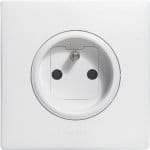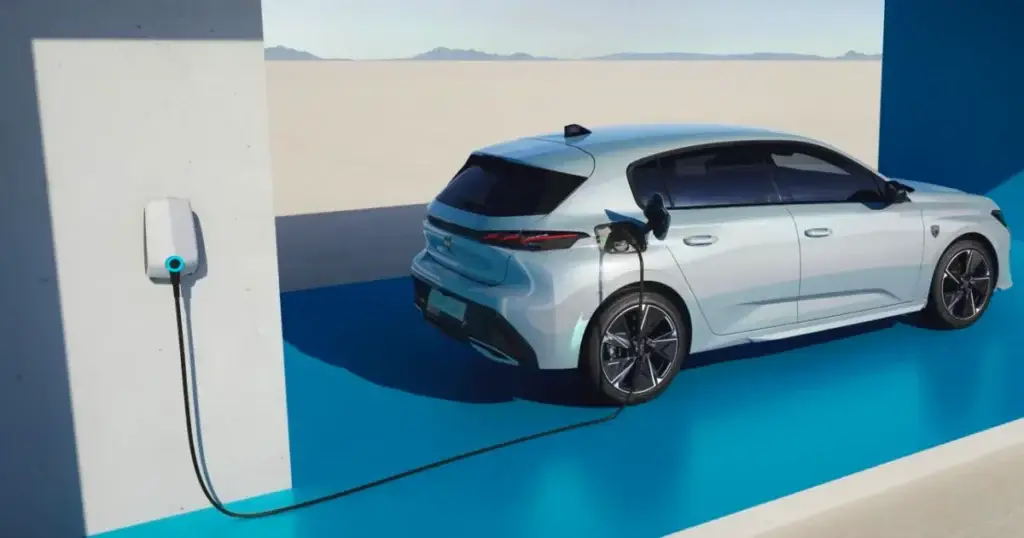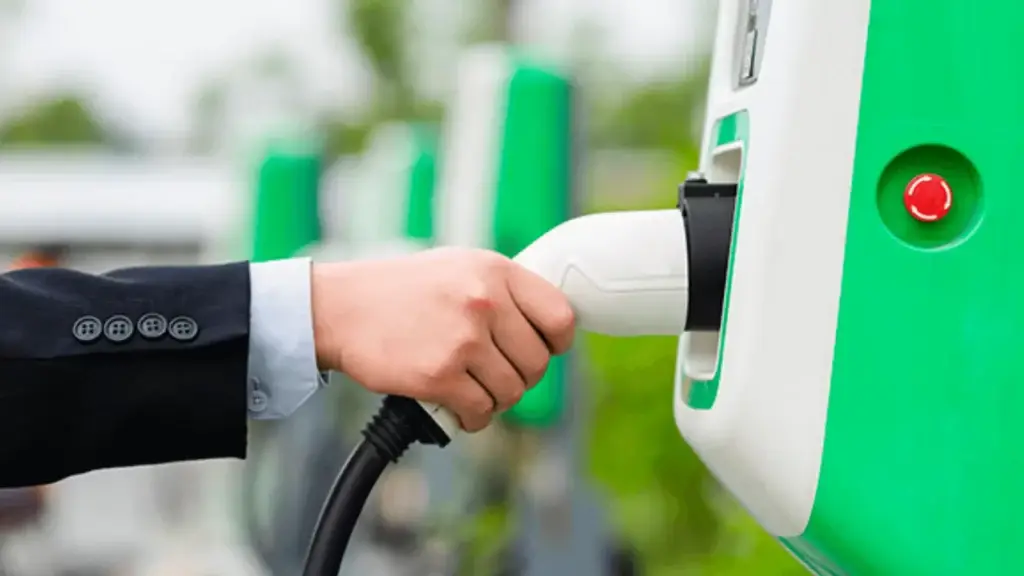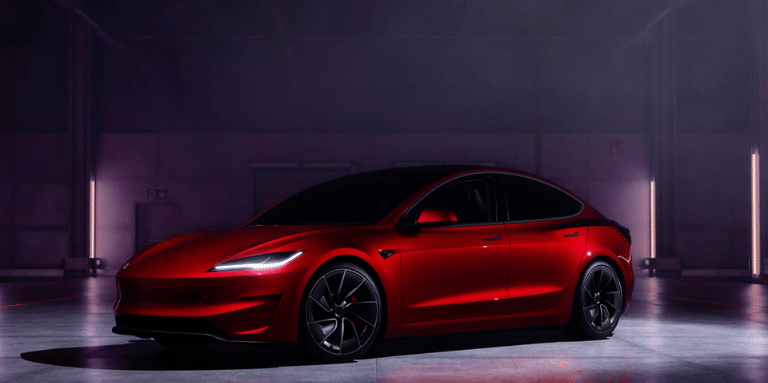How to choose your refill?
Before choosing an electric recharging solution, it's vital to consider the type of plugs fitted to your electric vehicle. Even with the presence of adapters, the type of cable your electric car is equipped with will play an important role in your choice of charging method.
Different types of plugs
- Domestic socket: this is obviously the most widely used socket, whether in the home or at public charging stations. A standard household socket can recharge at 1.8 kW, or 8A continuously.

- Type 1 socket: this socket is mainly used in Asia. Limiting power to 8 kW, it cannot be used for fast charging. It is found Nissan env200 and the Peugeot iOn.

- Type 2 socket: widely used in France. The Type 2 socket has been validated as a European standard. It delivers between 3 and 43 kW, enabling it to accept virtually all charging solutions. It is notably available on the Renault Zoé, Tesla Model S and Nissan Leaf.

- Type 3 socket: formerly standard in Europe, it has been replaced by the Type 2 socket, mainly because it can only deliver a maximum of 22 kW. However, it is still compatible with the Opel Ampera, Citroën C-Zero and Mitsubishi iMiEV.

- Type 4 plug: this type of plug enables fast recharging, thanks to its much higher power output. There are two standards. The CHAdeMo socket is a Japanese standard, delivering between 50 and 150 kW, while the CHademo socket is mainly compatible with Asian models such as the Nissan Leaf, Nissan e-NV200 Evalia and Peugeot e-Partner. The Combo plug, on the other hand, is a European standard with a power range from 50 to 350 kW, and has become the European standard compatible with the Renault Zoé, Tesla Model 3 and Kia e Niro.


Check your electrical network and the frequency of use of your electric vehicle
The choice of a home charging solution will also depend on the configuration of the electrical grid.
Indeed, if you want to charge at home or in your private parking lot, you first need to find out about the configuration of your electrical network. It must be correctly sized, wired and protected to ensure safe charging. In fact, some cars refuse to start charging when they detect an anomaly on the network. This is annoying when you consider that an electric car consumes a great deal of energy over many hours. We strongly advise you to call in an electrician to check your installation.
Most electric cars can be recharged at 2.3 kW, which is equivalent to between 9 and 30 hours of continuous charging using a conventional socket. On a dedicated charging station, power can reach 7 to 22 kW for a recharge in 3 to 10 hours.
Your choice will also depend on how you use your electric car. Depending on the amount of time you can devote to charging and the type of travel you do, some solutions will be more appropriate than others. All that's left is to find out what they are, and choose the one best suited to your situation.
Housing type: multi-family
Your choice of home recharging solution will depend first and foremost on whether you live in an individual or collective dwelling. These two solutions are totally different.
While you're totally free to install the socket or terminal of your choice in an individual home, the process is a little more complex in a condominium. In a condominium, the steps involved in plugging in to an outlet or installing a charging station, particularly in the building's parking lot, can be complex.
Here are your rights and the steps to follow
Right to take?
Any electric vehicle user living in a condominium can invoke his or her right to a plug to install a recharging solution on his or her parking space at his or her own expense.
What are the rules?
Since November 1, 2014, equipping your private parking space with charging points for rechargeable vehicles is a right:
- in buildings with an enclosed and covered parking lot
- if it allows individual metering and billing of electricity consumption
- for the installation of a standard charging station
What steps do I need to take?
Before carrying out any work, the tenant must inform the owner, with a copy to the condominium manager, by registered letter with acknowledgement of receipt. The owner, for his part, contacts the syndic directly. At this stage, you should contact an installer to obtain a quote.
The information must include :
- a detailed description of the work to be undertaken
- a plan or diagram of the work, unless the owner has made it impossible to draw up such a plan
Possible problems?
The trustee may take a period of up to six months in which to :
- decide to carry out such work in order to equip all the parking spaces in the building. If the work has not been carried out within this timeframe, the applicant may proceed with the installation.
If no objections have been raised, an agreement must be signed between the owner or managing agent and the service provider, setting out the conditions for installation, management and maintenance of the electric charging equipment. The property manager can only refuse a request for installation with convincing proof of refusal. If there is no objection within 6 months, work can begin.
What assistance is available?
Any owner of a principal residence who acquires a recharging solution can benefit from an energy transition tax credit of a flat-rate amount of 300 euros.
Multi-family buildings are eligible for the 50% subsidy available under the ADVENIR program, for the supply and equipment of a charging point for individual or collective use. All applications can be submitted via the online platform.
The Mairie de Paris has also introduced a scheme to help finance collective recharging in condominiums. The subsidy is equivalent to 50% of the total cost (including taxes) of installation and supply, with a ceiling of 500 euros per recharging point, up to a limit of 4 recharging points. These charging points must be accessible to all residents who request them.
Housing type: detached
If you're in this type of home, you can breathe easy! You're free to install the charging solution of your choice. And only your budget and your needs will determine which equipment you choose.
What charging solutions are available?
Today in France, 8 out of 10 owners of an electric car recharge at home. But between the standard socket, the reinforced socket and the Wallboxit's not easy to choose.
Normal 230v socket
To recharge your electric car, the most affordable solution is to plug it into a conventional socket. However, you'll need to make sure that your home's electrical network can handle such a charge, by calling in a professional. Power is limited to a maximum of 1.8 kW, but this may prove sufficient if you recharge your vehicle every night for your daily commute.
Reinforced socket: Green'Up

This reinforced plug enables you to increase the power of your domestic socket. It ensures fully secure recharging up to 14 A, while protecting your electrical installation.
Home terminal: Wallbox

The Wallbox is a home charging station. Costing from 500 to 1,500 euros, they come in 3 different strengths:
- Single-phase: 7 kW
- Three-phase: 11 kw and 22 kW
7 to 22 kW, provided the electrical installation is correctly sized.
It's the fastest, most flexible solution for charging an electric car at home. A wide range of products is available, offering options such as power adjustment, remote control, consumption data recording and consultation via an integrated display, locking and access control. You can take advantage of a 30% tax credit on its purchase and installation, regardless of income. Professional installation is compulsory, particularly as it may involve changing the electricity meter.
What you need to know
A Renault Zoé will take around 30 hours to fully recharge via a standard socket, 15 hours via a reinforced socket and 8 hours via a Wallbox.
Green'Up or Wallbox: which to choose?
There's a difference between the Green'Up plug and the Wallbox terminal, so let's take a look at their advantages and disadvantages.
Green'Up
The Green'Up plug offers a recharging solution halfway between the domestic plug and the Wallbox. It looks like a standard household socket, but with a few improvements in terms of strength and power handling.
To operate at full power, the plug requires the use of an occasional charging cable compatible with this system and a wall socket. If either of these two conditions is not met, charging will take place at 2.3 kW, as with a conventional household socket.
The manufacturer's standard electrical installation is designed to be upgradeable. In fact, circuit breakers and cables are sized to support a load of up to 3.7 kW or 16A at 230 volts.
The benefits:
- Charging time: the Green'Up plug delivers more power than a household outlet
- Price: Legrand offers the Green'Up plug at an affordable price ranging from €60 to €150 compared with the Wallbox charging station, which can cost from €500 to €1,500.
- Installation: Green'Up plugs must be installed by an approved electrician.
- Strong presence: Green'Up plugs are widely installed in private homes, thanks to installation offers subsidized by automakers when a new electric vehicle is purchased in France.
Disadvantages:
- Infrastructure: the Green'Up system has a limited presence on public recharging infrastructures. It is also difficult to identify, as there is little to distinguish a Green'UP plug from a conventional plug, particularly when it is integrated into the charging station.
- Power: the Green'Up system requires various additional installations to operate at full power
- Compatibility: some vehicles are supplied with a charging cable for domestic outlets compatible with this system. However, it's hard to find such a cable in the aftermarket, even at dealerships.
Wallbox
The Wallbox remains the recommended solution for recharging your electric car. The Wallbox allows you to recharge your electric car in the safest possible way.
A wallbox is a wall-mounted box for recharging an electric car. It can be installed in an individual's garage, or in a company or local authority parking lot.
The benefits:
- Safety: compared with a simple household socket, the Wallbox provides additional safety thanks to its built-in protection devices.
- Recharging: recharging is the second advantage of the Wallbox. It allows you to recharge an electric car more quickly than with a conventional or reinforced socket.
- Recognition: some automakers, such as Renault and BMW, impose charging on a Wallbox-type charging device by simply not providing a cable for charging on a traditional socket.
- Variety of choice: there are many Wallbox models, with more or less similar functionality and performance, such as the EVlink Wallbox or the Witty from Hager.
- Added value: the installation of a charging station adds value to a home, and its price increases as a result. What's more, if a house already has an outlet, this is a plus for future resale of the property.
State aid :
- State aid The French government offers a range of incentives to reduce the cost of installing a wallbox. It takes the form of a 30% tax credit.
- Any owner: of a principal residence who acquires a recharging solution can benefit from an energy transition tax credit of a flat-rate amount of 300 euros.
- Multi-family buildings: are eligible for the 50% subsidy available under the ADVENIR program, for the supply and fitting of a recharging point for individual or collective use.
Changes in eligibility conditions for individual charging points in apartment buildings :
From August 1, 2022, eligibility requirements for individual charging points in apartment buildings will change. From now on, only T2S single-phase charging points will be eligible for the ADVENIR program.
A quick reminder: the rate and amount of aid for this target remain unchanged. It is still equal to 50%, with a maximum amount of €960 (excl. VAT) per recharging point.
- Paris City Council A grant of 50% of the cost of the work (€500 per charging point, 4 charging points maximum), i.e. a maximum of €2,000, for social landlords or property managers wishing to install charging stations for residents or visitors.
- Normandy: if you buy an electric vehicle, you can reduce the cost of installing charging stations. The amount of assistance is 30% of the amount excluding tax, up to a limit of €15,000 per request, coupled with the purchase of an electric vehicle.
Disadvantages:
- Price: The main disadvantage of a wallbox is its price. Charging from a household socket doesn't involve any particular extra cost, This is not the case with wallbox charging, which represents an investment. There are two main areas of expenditure: the cost of the charging station and the cost of installation.
Which charging solution to choose: Green'Up or Wallbox?
There's a wide choice of refill solutions. Several criteria are taken into account, such as price, type of accommodation and frequency of use. If you live in a single-family dwelling and your daily mileage requirement is less than 100 km, and you're on a budget, then the best solution for you is the Green'Up plug.
Finally, if you own a parking lot, then the best solution is a Wallbox , because it's a long-term investment that can increase the value of your parking space. If you live in a block of flats and own a Renault Zoé, we recommend a Green'Up plug. Finally, if you own a Tesla Model 3 and live in a house, the best solution is to recharge with a Wallbox.
Discover the electric cars available from Beev





